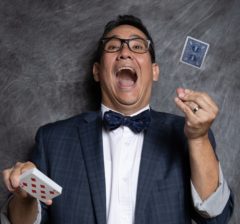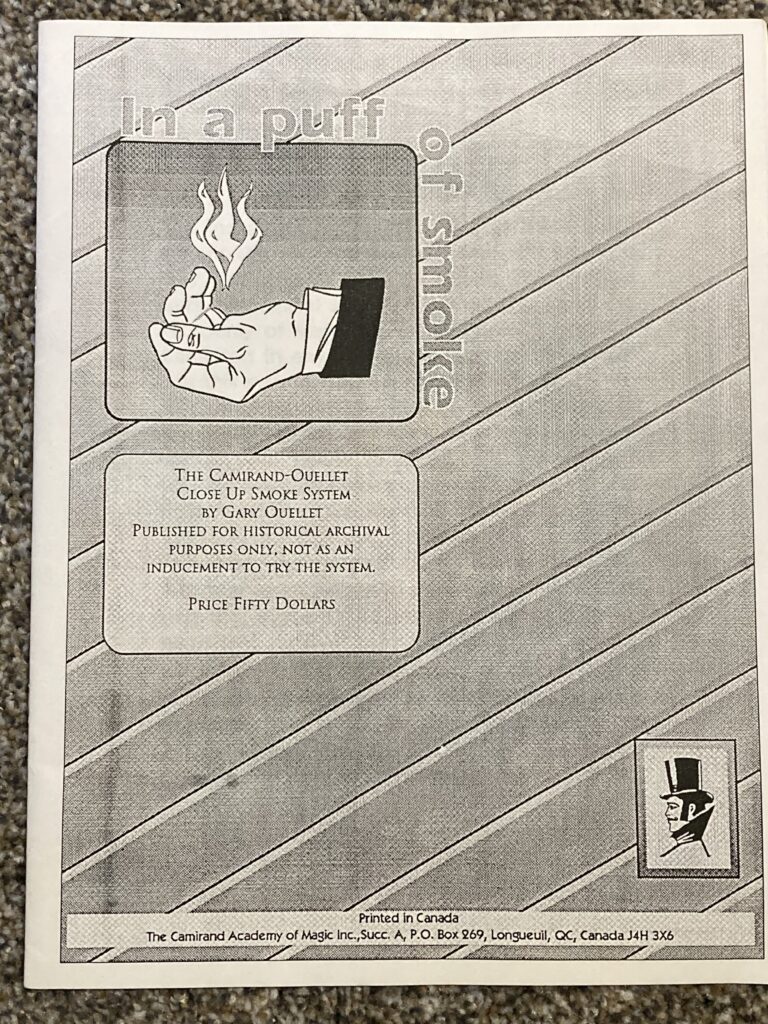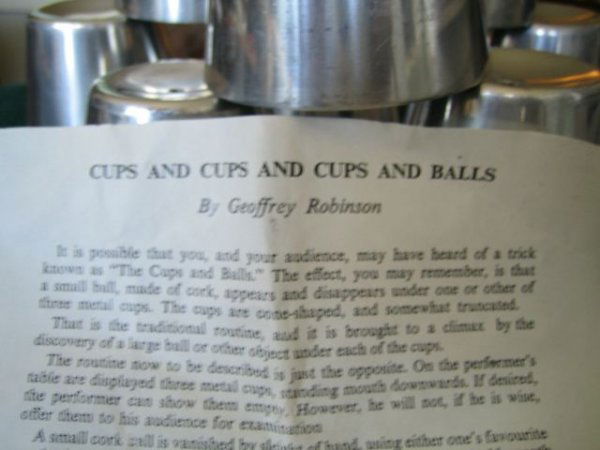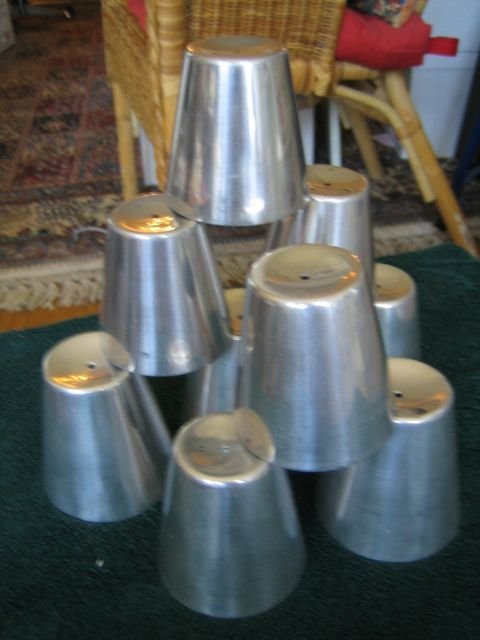One of the tricks that I do is my version of the Invisible Deck. It’s really just a card prediction and not really an Invisible Deck, but that was my starting point, so I call it that. I’m always looking for new methods that work better and came across the trick Portent.
Here’s the blurb for the trick:
One of the hits of Canadian Alain Choquette’s popular stage act!
The magician predicts ahead of time the exact identity of a card freely chosen by a spectator not a stooge.
The prediction is sealed in an envelope, which was hanging above the heads of the audience!
No sleight-of-hand, no magicians’ choices, no forces, no manipulation, no switches, no electronics.
The magician touches neither the deck, nor the envelope.
This is recommended only to stage & cabaret performer.
This trick hasn’t been made for a long time, but you can still find them for about $75. I found the instruction booklet for $5 and bought that.
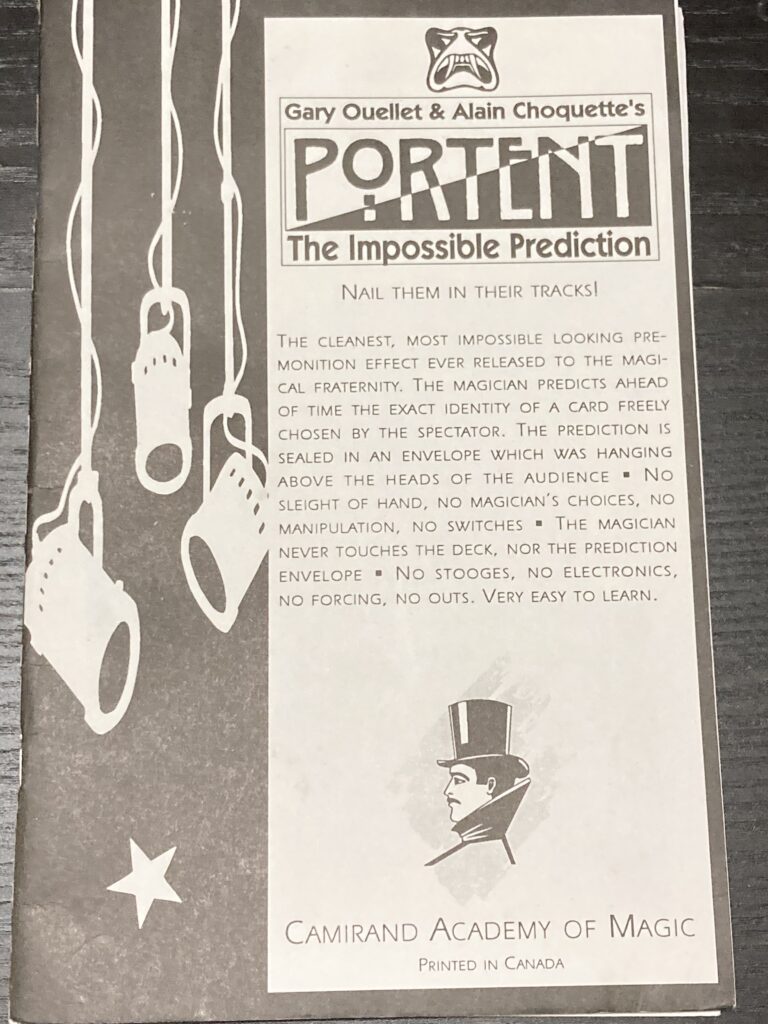
I’m glad I just bought the booklet, as there’s a HUGE condition missing from the trick. You need a second person to do it, which 100% makes it a trick that won’t work for me. I’m glad I just have $5 into this trick and not $75. If you’ve got a second person, and working in a more formal venue, it not a bad method.
This trick is one of the reasons I’m weary of any trick that’s advertised basically as a list of what it’s not. When I see that, frequently there’s a play on words with the things on the list or it’s a very impractical method.
-Louie
